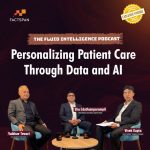Why this blog?
With growing concerns over climate change and resource consumption, understanding how to reduce the environmental impact of AI is more important than ever. This blog provides an in-depth exploration of Green AI strategies, detailing practical approaches to model design, training efficiency, and deployment optimization. Whether you’re a data scientist, AI developer, or sustainability advocate, this guide will offer valuable insights into making AI systems more sustainable and effective.

What if AI could do more than just transform industries, what if it could also help save the planet? As we push the boundaries of artificial intelligence, there’s a growing need to consider its environmental footprint. Green AI is a forward-thinking approach to designing, training, and deploying AI models that not only enhance efficiency but also minimize their carbon footprint.
Now, let us explore how innovative practices and policies are coming together to create AI that’s not just smart, but sustainable. Let’s talk to an expert about some of the key questions and strategies shaping the future of Green AI and its role in building a more sustainable world.
How can green AI strategies effectively reduce the carbon footprint of machine learning models?
As we continue to integrate AI into various aspects of our lives, reducing its environmental impact becomes increasingly important. Green AI strategies reduce the carbon footprint by targeting three critical stages: model design, training, and deployment.
- Model Design: By adopting lightweight architectures like Hypermixers, models can achieve similar performance to traditional deep learning models but with significantly fewer parameters and operations, thereby reducing the computational load and energy consumption.
- Training Efficiency: Utilizing techniques such as early stopping, low-precision computation, and distributed training across energy-efficient hardware (e.g., TPUs optimized for lower energy consumption) directly lowers the energy required for training. Training on synthetic or smaller datasets also minimizes the resources needed.
- Deployment Optimization: Deploying models on edge devices instead of cloud-based servers reduces the need for continuous data transmission and centralized processing, leading to lower energy usage. Edge AI, for example, processes data locally, which cuts down on the energy costs associated with data transport and large-scale cloud infrastructure.
What role do regulations play in promoting the adoption of sustainable practices within AI development?
Regulations are essential in setting a baseline for sustainability by enforcing guidelines and standards that promote the adoption of Green AI practices.
- Mandatory Reporting: Regulations can require companies to report the energy consumption and carbon emissions of their AI systems, which fosters transparency and accountability. This kind of reporting can push companies to optimize their models and operations to meet sustainability benchmarks.
- Incentives for Green Practices: Governments can offer tax breaks, grants, or other incentives for companies that adopt energy-efficient AI technologies or use renewable energy sources in their data centers. For example, offering benefits for companies that integrate circular economy principles in hardware design—such as using recyclable components—can encourage sustainable AI practices (METALAB).
- Standardization: Establishing standards for measuring the carbon footprint of AI systems can help create a uniform approach across industries, making it easier to compare and improve sustainability efforts. Such standards can include the use of specific metrics like FLOPs (Floating Point Operations) for measuring computational efficiency.
Can you explain the difference between ‘green-by AI’ and ‘green-in AI’ and how each contributes to sustainability?
As we have begun to rely heavily on AI, understanding its role in sustainability becomes crucial. Both ‘green-by AI’ and ‘green-in AI’ represent different facets of how AI impacts the environment and contributes to sustainable practices.
- Green-by AI: This refers to AI applications designed to improve sustainability in other sectors. For example, AI-driven smart grids optimize energy distribution by predicting demand and adjusting supply dynamically, reducing waste and enhancing the use of renewable energy sources. In agriculture, AI can optimize water usage and reduce the need for chemical inputs by providing precise recommendations for crop management, leading to more sustainable farming practices.
- Green-in AI: This concept focuses on making AI itself more sustainable. This includes designing energy-efficient algorithms, using hardware optimized for low power consumption, and adopting practices like edge computing, which reduces the need for energy-intensive cloud processing. Green-in AI is about reducing the environmental impact of AI systems throughout their lifecycle, from development to deployment.
Both approaches contribute to sustainability: Green-by AI enables sectors like energy and agriculture to reduce their environmental impact, while Green-in AI ensures that the AI technologies powering these improvements are themselves sustainable.
How do AI-driven solutions enhance energy efficiency in smart grids and what are the implications for overall resource consumption?
AI-driven solutions enhance energy efficiency in smart grids by leveraging real-time data analytics and predictive modeling to optimize the balance between energy supply and demand.
- Demand Forecasting: AI models predict energy demand across different timescales, allowing grid operators to manage energy distribution more efficiently. This reduces the need for overproduction and minimizes waste.
- Dynamic Load Management: AI systems can dynamically adjust energy loads based on real-time usage data, directing power where it’s needed most and reducing strain on the grid. This leads to fewer power outages and better integration of renewable energy sources like solar and wind, which are inherently variable.
- Implications for Resource Consumption: The efficient management of energy reduces the need for fossil fuel-based backup power, cutting down on greenhouse gas emissions. Additionally, better integration of renewable energy helps reduce the overall carbon footprint of the power sector, making it more sustainable in the long run.
In what ways can AI applications in agriculture lead to more sustainable farming practices and reduced environmental impact?
AI applications in agriculture contribute to sustainability by optimizing resource use, improving crop management, and reducing environmental impacts.
- Precision Agriculture: AI systems analyze data from sensors, drones, and satellites to provide farmers with precise information on where and when to water crops, apply fertilizers, or use pesticides. This targeted approach reduces the overuse of resources and minimizes runoff, which can pollute waterways.
- Yield Prediction: AI models predict crop yields based on various factors such as weather patterns, soil conditions, and crop health. Accurate yield predictions enable better planning and reduce the likelihood of overproduction, which can lead to waste and unnecessary use of resources.
- Sustainable Farming Techniques: AI can recommend sustainable farming techniques, such as crop rotation and cover cropping, which maintain soil health and reduce the need for chemical inputs. This not only lowers the environmental impact but also enhances the resilience of farming systems against climate change.
What challenges do organizations face when integrating AI into their environmental policies, and how can they overcome them?
Organizations face several challenges when integrating AI into their environmental policies, including:
- High Initial Costs: The upfront investment required for adopting sustainable AI technologies can be significant. Overcoming this challenge involves focusing on long-term gains such as reduced energy costs and potential regulatory incentives.
- Lack of Expertise: Many organizations may lack the in-house expertise to implement Green AI practices effectively. This can be addressed by investing in training and development or partnering with external experts who specialize in sustainable AI.
- Measurement and Reporting: Accurately measuring the carbon footprint of AI systems can be difficult due to the lack of standardized metrics. To address this, organizations should adopt comprehensive reporting frameworks that include metrics like energy consumption, carbon emissions, and resource usage across the entire AI lifecycle.
- Resistance to Change: There may be resistance within organizations to change established practices. To overcome this, leaders should communicate the strategic benefits of Green AI, including cost savings, regulatory compliance, and enhanced corporate reputation, to drive buy-in from stakeholders.










